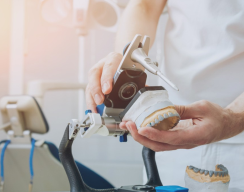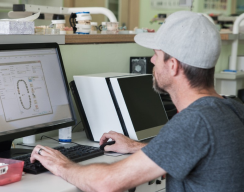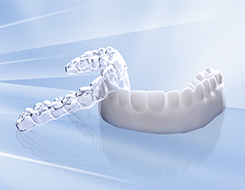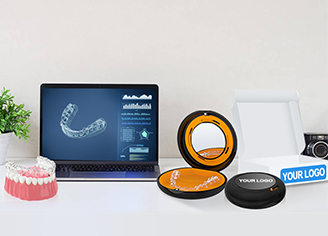The introduction of invisible orthodontics
Advantages:
1. Aesthetics: Invisible orthodontics are designed to be discreet and less noticeable, making them an excellent choice for patients who are conscious about the appearance of traditional braces.
2. Comfort: Clear aligners are usually more comfortable than traditional braces. They are made of smooth plastic material that does not irritate the cheeks and gums like metal brackets and wires.
3. Removability: Clear aligners are removable, allowing candidates to eat, drink, brush, and floss without the hindrance of braces. This flexibility contributes to better oral hygiene and less risk of developing cavities or gum issues during the treatment.
4. Customization: Invisible orthodontics are custom-made for each individual candidate to optimize treatment efficiency and produce more predictable results.
5. Shorter treatment time: Advanced orthodontic technologies and custom-made aligners often lead to shorter treatment duration compared to traditional braces.
Development Trends:
1. Digital advancements: The use of digital imaging and CAD/CAM technology enable better diagnosis, treatment planning, and more precise fabrication of custom aligners, further enhancing treatment outcomes.
2. Artificial intelligence: Machine learning algorithms are being integrated into orthodontic software to improve treatment planning and predict the movement of teeth more accurately. These algorithms can make adjustments in real-time, potentially reducing the number of office visits and treatment duration.
3. 3D printing: The increased use of 3D printing technology in dental practices will help streamline the production of customized orthodontic appliances.
4. Improved materials: Newer, more advanced materials are being developed to enhance the efficacy of orthodontic treatment. These materials have the potential to provide better strength, flexibility, and durability while maintaining aesthetics.
5. Teledentistry: Telehealth is becoming an essential part of healthcare, and orthodontics is no exception. Remote monitoring through smartphone apps and consultations with the orthodontist can help provide timely feedback, reducing the need for frequent in-person visits. In summary, invisible orthodontics offers several advantages for candidates and is consistently evolving with new technologies and advancements. These developments have the potential to enhance treatment outcomes, shorten treatment times, and make orthodontic treatment even more comfortable and aesthetically pleasing.
-
1
How do we make good quality of Clear Aligner during the manufacture and designing the treatment plan
Jun 15,2023
-
2
Digital technology trend in clear invisible orthodontics
Jun 14,2023
-
3
What our orthodontics team do for a best treatment plan
Jun 12,2023
-
4
The advantage of Invisible orthodontics and clear aligner
Jun 12,2023
-
5
Different age groups in clear aligner treatment plan
Jun 21,2023
-
6
Invisible orthodontics market scale and trend in following 10 years
Jun 15,2023
Customization Service
RFG REQUEST
FOR QUOTATION
Global Sourcing Marketplace
-
282100+
RFQ
-
<23h
Avg Quotation Duration
-
175000+
Active Suppliers
-
6039
Industries
One Request, Multiple Quotes
"Outd doorP65 waterproofhigh lumen led reflector 30w 50w 100w linear led flood light" from D***** received 6 quotation(s)

















